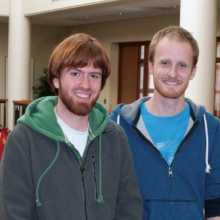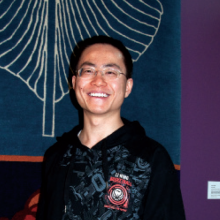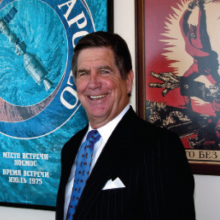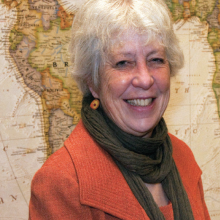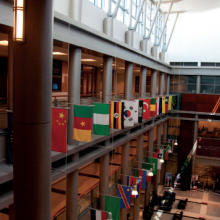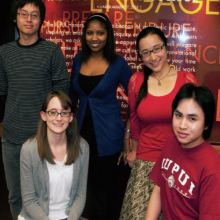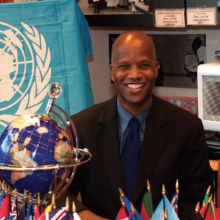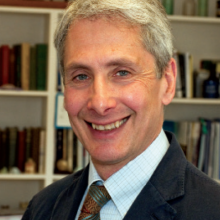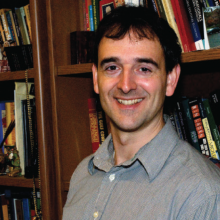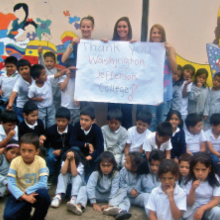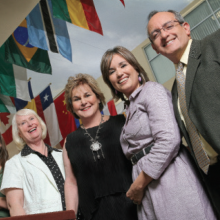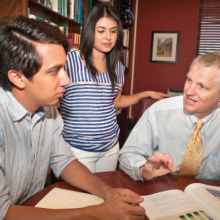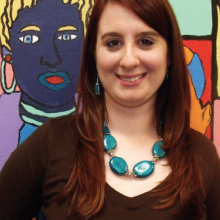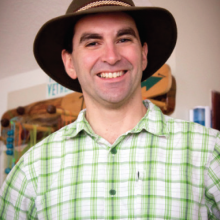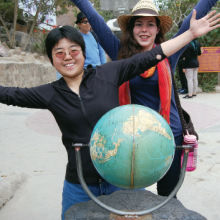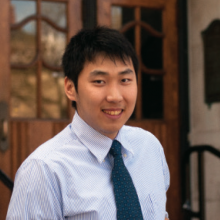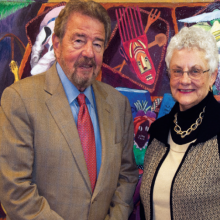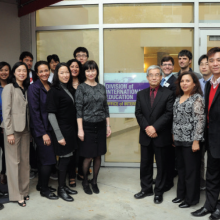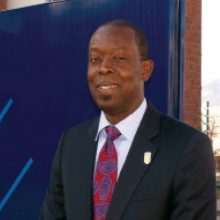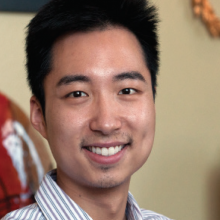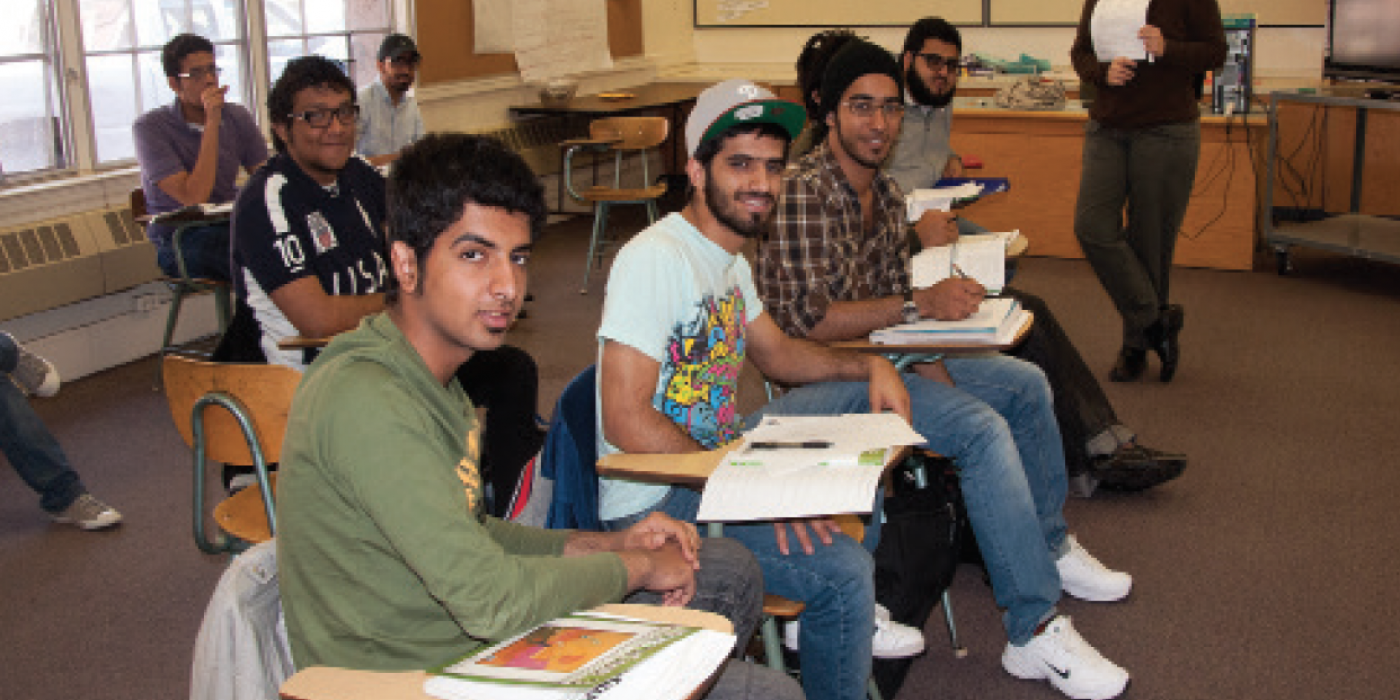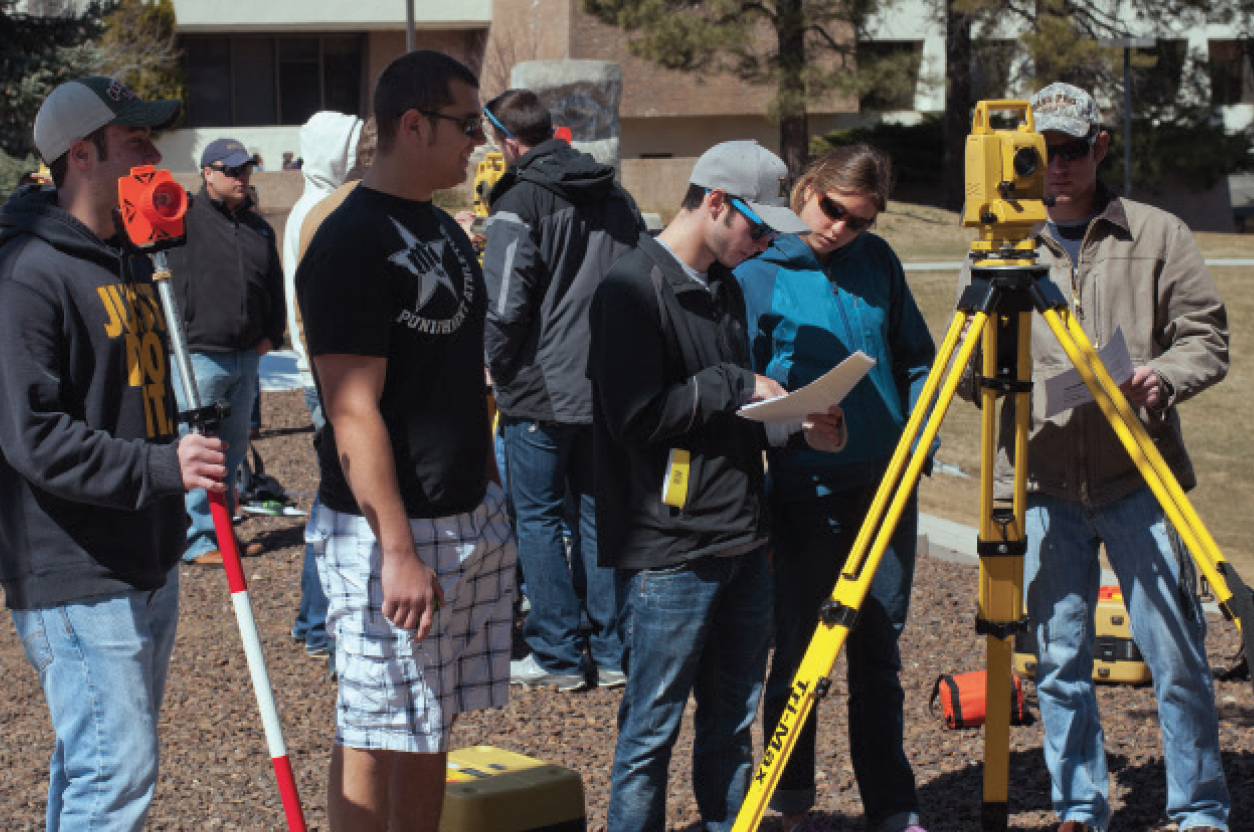2011 Comprehensive Macalester College
Macalester College’s determined global outlook can be seen and heard on even a short stroll around the 53-acre campus in a leafy St. Paul, Minnesota, neighborhood not far from where F. Scott Fitzgerald grew up. The flag of the United Nations flies overhead as it has every day for 61 years. Dozens of other banners line the balcony above Café Mac, the college dining room, and flags from the home countries of Macalester students are rotated on four other flagpoles throughout the year. Sitting conspicuously in the foyer of the new athletic and fitness center is a ping pong table dedicated to and autographed by Nobel Peace laureate and former UN Secretary General Kofi Annan, a track star and champion ping pong player here half a century ago (he graduated in 1961). On warm spring afternoons, the rhythmic beat of drums reverberates across campus as the 40-member African Music Ensemble practices outdoors.
These visible tokens all reflect what Macalester calls its “special emphasis on internationalism, multiculturalism, and service to society” and its determination, in the words of President Brian Rosenberg, to produce “socially responsible global citizens and leaders.” That commitment begins at home, where Macalester students are strongly encouraged to volunteer in the Twin Cities’ polyglot tapestry of immigrant communities—Hmong, Somali, and Hispanic among them—as well as to undertake service and learning abroad. Indeed, Rosenberg in 2006 combined the college’s three separate offices for community service, internships, and international education into a unified Institute for Global Citizenship (IGC) with the aim of making it “a catalyst for cutting-edge teaching, scholarship, and events fostering the education of citizen leaders for the interconnected world of the twenty-first century,” with Ahmed Samatar, professor of international studies and a leading scholar on the history and struggles of his native Somalia, at the helm as its first dean. Two of its conjoined parts, the International Center and the Civic Engagement Center, share quarters in the U.S. Green Building Council LEED platinum-certified Markim Hall, where water circulating through radiant ceiling panels and flooring provides the “hydronic” heating and cooling. The internship office is next door in Kagin Commons along with the Office of International Student Programs.
Finding Stellar Students on a Fjord in Norway
Generous financial aid helps Macalester attract international students in large numbers. The private college actually provides aid to a higher percentage of international students (almost 90 percent) than the U.S. undergraduates (70 percent), and the average package covers two-thirds of the more than $50,000 annual cost of tuition, room, and board. Macalester has recruited top students from the United World Colleges (UWC) for years even before philanthropist Shelby Moore Cullom Davis gave it $13.5 million to provide $20,000-a-year scholarships for graduates of UWC, an international network of boarding schools offering international baccalaureate diplomas to students chosen for academic ability and leadership potential. Jimm Crowder, then-associate director of international admissions, made a dozen recruiting visits to the Red Cross Nordic UWC on a fjord in Norway, more than any other visitor, the headmaster told him, save Queen Sonja.
“Forty years ago, the religion department here would have been five Presbyterian clergymen teaching Bible. We’re still five, but three of us do Asian religions and Islam.”
The robust international studies (IS) program, founded in 1949, is the fifth most popular major, with four and one-half tenure-track positions of its own and allied faculty across the humanities, social studies, and even the sciences. Its chair, David Chioni Moore, calls it “the oldest, broadest, and deepest such program at any private liberal arts college.” Education abroad is mandatory in this program, as it is for language and anthropology majors and those from a handful of other disciplines. Macalester now offers interdisciplinary concentrations in global citizenship, community and global health, human rights, and humanitarianism. Overall, 60 percent of Macalester students study abroad, over half outside Western Europe.
Duties of World Citizenship
Macalester held its first classes in 1885, a nonsectarian institution affiliated with the Presbyterian Church. Classics scholar James Wallace saved it from bankruptcy as president at the turn of the twentieth century and was the lion of the faculty until the eve of World War II. His son, DeWitt Wallace, founder of Reader’s Digest, became a major benefactor. President Charles Turck raised the UN flag in 1950 and spoke of “the duties of world citizenship.” In recent decades Macalester has attracted a far more diverse and globally minded faculty to carry out that vision. “Forty years ago, the religion department here would have been five Presbyterian clergymen teaching Bible. We’re still five, but three of us do Asian religions and Islam,” said Professor of Religious Studies James Laine.
Classics Professor Andrew Overman takes 25 Macalester students each summer to work on the excavation of a Roman temple complex at a site called Omrit in northern Galilee, near Israel’s border with Lebanon. They live on a kibbutz, publish with Overman in scholarly journals, and uncover finds that are on permanent display at the New Israel Museum in Jerusalem. It is “an incredibly transforming experience for everybody,” said Overman, who previously brought students to a Black Sea dig in Sevastopol, Ukraine.
Most Macalester students study abroad not with their professors but at some 70 recommended programs overseas bearing the International Center’s stamp of approval. Macalester runs a handful of semester-long programs, including one in Maastricht, Netherlands, and classes taught in German at the Goethe Institute in Berlin and the University of Vienna in Austria. Since 2003 Macalester, in a consortium with Pomona and Swarthmore colleges, has offered a program on globalization and the environment at the University of Cape Town in South Africa.
A Preference for Foreign Programs and Local Faculty
Michael Monahan, former director of the International Center who recently became president of BCA Study Abroad, said Macalester approaches education abroad “in a very selective way. Our faculty primarily are in the classroom here. We like to see foreign faculty teaching our students abroad. So our motto has been to engage with foreign universities and program providers rather than running them ourselves.” Monahan said, “A distinctive feature of Macalester education abroad is it’s a match between each individual student and not just a program, but a course of study.” Even the education abroad brochures used to be grouped by major instead of by country or region. But that caused some confusion and was changed recently to make it easier for students to see all their options by country.
Paul Nelson, an alumnus of the class of 1972, the new director of the International Center and former study abroad coordinator, and study abroad adviser Rachel Kamagne-Jones, a more recent alumna, class of 2007, structure their advising sessions around academic content, not location. They personally interview each applicant. “It’s rare to tell somebody no. Everything on campus is setup to make the answer yes,” said Nelson, an attorney and author who used to run a summer Spanish immersion program in Cuernavaca, Mexico. “It’s the ethos that students take it seriously.”
“A distinctive feature of Macalester education abroad is it’s a match between each individual student and not just a program, but a course of study.”
An unusual spurt in enrollment with the class that entered in 2009 has produced a bumper crop of nearly 350 students studying abroad in 2011–12. Fourteen students were headed to China, a record, and 17 signed up for intensive Arabic programs in Morocco, Jordan, and England. Star quarterback Clark Bledsoe, a rising junior and anthropology major, will skip spring 2012 football practice to study in South Africa, one of eight football players’ bound for different parts of the world. “I savor the focus this school places on internationalism, as well as all the interesting people it attracts,” said the anthropology major.
Macalester’s geography department, with five professors, draws swarms of students to courses on geographic information systems (GIS), the environment, urban studies, and global issues. Senior Needham Hurst, an economics major, minored in geography and Chinese and applied his GIS skills while studying in China to research how people there were being evicted from ancestral homes for urban renewal. Hurst, who also spent a month studying in Bangladesh, said, “It was shocking how closely these patterns of land loss match those I mapped on American Indian reservations.”
Linguistics and Asian studies major Morgan Sleeper, 22, from Deland, Florida, studied Chinese in China, Maori in New Zealand, and Gaelic in Ireland during his four years at Macalester and won a $25,000 Watson Fellowship to travel the world for a year exploring how Celtic music is keeping Gaelic and other endangered languages alive.
Sarcasm 101 and Bus Tokens
For Macalester’s contingent of 227 international students (almost 12 percent of undergraduates), introduction to campus and U.S. life includes a course that International Student Programs Director Aaron Colhapp titled Sarcasm 101: An Introduction to Humor in America, which includes clips from a sardonic Saturday Night Live skit as well as other break-the-ice discussions and activities. Colhapp brings as guest lecturer an associate dean’s spouse who once taught improvisation at Second City. “Students love it,” he said.
The international office also sends U.S. and international students into Minneapolis and St. Paul with a bus token and instructions not to come back until they have found and interviewed several people with distinct characteristics, from eyeglasses to tattoos. “It’s a good way to get them out, learn the bus system, and get them used to not being afraid to talk to other people,” said Colhapp.
Another program called Ametrica pairs students with mentors throughout the year for fortnightly discussions on politics, religion, social networking, and other topics. Marissa Leow, a biology major born in Singapore but raised in part in upstate New York, works in the international student office and signed on as a mentor. Her skepticism of the program shifted when she saw that new international students “value hearing each other’s perspectives and going through that [adjustment] process with each other.”
Yulun Li, 18, a freshman from Chengdu, China, said, “There’s a lot of things to do here. I’m very busy, meeting new people, talking to new people. It’s kind of joyful.” Li was surprised to find how interested American students are in events outside their country. But first-year student Amy Janett from Vernon, New Jersey, who spent a year in Iceland as a high school exchange student and helps organize events for international students, was surprised to find that not everyone at Macalester was as internationally minded as she is.
President Rosenberg said, “Any time you get 2,000 students, you’re going to get different priorities and perspectives.” He believes student interest in global matters is greater at Macalester than at most schools, and he has even advised students’ who are weighing whether to accept the college’s offer of admission that if they aren’t seeking such an international emphasis, “this might not be the right college for you.”
International Journals and Its Own Student Council
The Institute for Global Citizenship, which has its own student council, brings scholars to campus each fall for a three-day International Roundtable devoted to globalization issues. Papers commissioned for the forum are published in the annual journal Macalester International.
Samatar, who recently stepped down as IGC dean, is also founder and editor-in-chief of Bildhaan: An International Journal of Somali Studies. “Working here (at the IGC) has been challenging and delightful and exhilarating, but I need to get back to full-time scholarship,” said Samatar, who at age 17 was chosen to be a news reader on the national news broadcast in his homeland and was a broadcaster for the BBC Somali Service in London before coming to the United States for college. “Internationalism as a spirit has been a part of Macalester’s life for decades,” said Samatar. “No (other) college in the United States has put together this kind of an internationalist academic program so early.”
A national search is on for Samatar’s successor as dean. Asked what advice he would give that person, Samatar said, “Excellence is a moving thing. It is not something that you discover once, pitch your tent, and just (relax). Others are pushing, too. New questions arise and old questions refuse to go away and require new methodologies. So excellence is a journey. You never really rest.”



